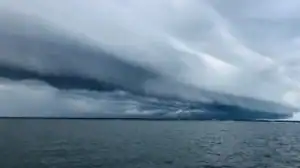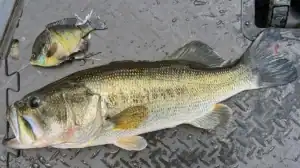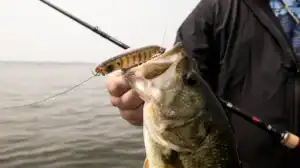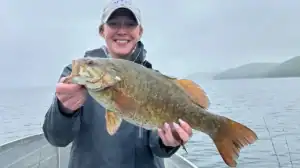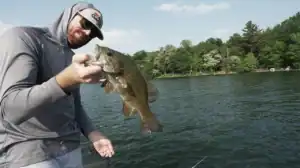It seems that most of our tournament fishing lives are spent following a cold front across the nation to our next destination. This never leads to prime fishing conditions, but nonetheless
someone has to win the tournament, so we all go out no matter how tough it might be to catch one. Blue bird skies, north winds, high barometric pressure, and cooler air temperatures usually
signal a tough day on the water, but you can use these conditions to your advantage.
I think the first step to success after a cold front is to realize what these conditions do to the bass. They will of course be less aggressive and tighter to whatever cover they are using. So as a fisherman, I will expect to get fewer bites, and I know the strike zone for the fish has gotten smaller.
If I am out on a practice day with these conditions, and I get a couple bites in an area, I will feel like it is a pretty productive area. Whereas on a day with better conditions, I would expect to get several bites in a good area.
The same principle can also be applied to techniques and baits as well. These are the days when you really need your “A†game when it comes to casting or pitching. Presentations need to be exact
and quiet to get a bite.
Downsizing your bait is also a popular way of getting more bites in post-cold front conditions. When doing this, you tend to increase the number of bites you get, only if you are putting the bait in the bass’s strike zone. Just downsizing does not mean you will get a bunch of bites. You still have to find the bass and put it in front of them.
To me downsizing a presentation mainly refers to the overall profile of the bait. So if I am using a Strike King 1/2-ounce Pro Model Jig with a Denny Brauer Chunk behind it, I would downsize it by trimming the skirt back further and go to a junior-size chunk behind it, giving the jig a smaller overall profile. This allows me to fish the bait the same way yet give the bass a smaller look.
I try to maximize my time on these days by concentrating on the heaviest cover available. Specifically within this cover, look for the darkest, shadiest spot. That is where the bass are usually hiding, and they will not move very far to eat. For structure fishing, I’m looking for the roughest spot or the area with the thickest cover. It is also a good idea to make multiple presentations to the key spots, sometimes you need to annoy them into biting. Keeping the bait in their face for a while by dead sticking can also payoff especially when fishing for Florida-strain bass.
These are also days when salvaging some bass to fill a limit can become very important. Committing the first few hours of the day to catching a couple kicker fish, then going to fill my limit is my strategy most of the time, but occasionally just getting that limit can save you in a multiple day tournament. My goals for the tournament usually determine how I will decide on this matter.
Unstable weather is a big part of bass fishing, but a smart angler will recognize how it affects the fish then plan accordingly. Do not get stuck in a rut when the cold front comes through. Be willing to adjust. Sometimes it is just a matter of buckling down and grinding it out. Do not let the bass put you to sleep, always be ready and alert. The bites on tough days are too few to miss even one.



